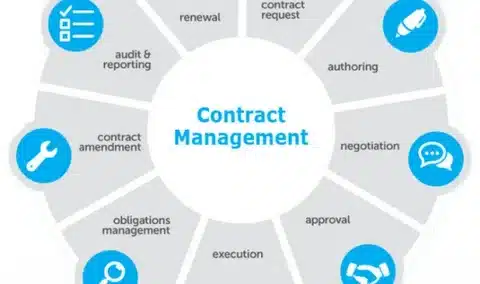Every successful software project is built on alignment — between business needs, developer execution, stakeholder expectations, and delivery timelines. But in the fast-paced world of APIs, where backend, frontend, DevOps, and compliance teams all converge, alignment is often easier said than done. This is where API requirements management becomes essential — not just as a checklist item, but as the glue holding your API project together.
Think of it as the contract before the code: a shared understanding of what your API needs to achieve, how it should behave, what constraints it must respect, and how it will evolve. When done right, API requirements management saves weeks of rework, eliminates scope creep, and dramatically accelerates time to market.
The Cost of Not Getting Aligned
API projects fail — or fall behind — for many reasons. But one of the most preventable is miscommunication. Product teams assume one thing, engineers build another, and QA tests for something else entirely. Even worse, if requirements live in scattered docs, untracked emails, or whiteboard snapshots, teams quickly drift apart.
Without clear, centralized requirements:
- Backend and frontend timelines diverge
- Tests fail due to undocumented edge cases
- APIs break when third parties integrate with old assumptions
- Compliance gaps appear at the final hour
This isn’t just inefficiency — it’s risk.
Requirements as the Foundation of API-as-a-Product Thinking
As companies shift toward treating APIs as products (especially in SaaS, fintech, and platform businesses), requirements must be treated as part of product strategy — not just engineering scope.
API requirements management formalizes what your API must do, should do, and must not do — across functional, non-functional, and strategic layers:
- Functional: Endpoints, parameters, expected inputs/outputs
- Non-functional: Latency targets, uptime SLAs, pagination limits
- Compliance: GDPR, HIPAA, or internal data governance rules
- Security: Token-based auth, rate limiting, encryption standards
Documenting this holistically means teams aren’t just coding — they’re building with purpose.
Requirements Drive Parallel Development (The Right Way)
A well-managed API requirements document enables one of the most powerful efficiencies in engineering: parallelization. When both backend and frontend teams can agree on an endpoint contract upfront — including inputs, outputs, and error structures — they can build independently and confidently.
Using tools like OpenAPI, Stoplight, or Postman, teams can generate mock APIs from requirements and simulate responses. This means:
- Frontend devs don’t need to wait for backend completion
- QA can begin test case design earlier
- Documentation starts before the first deployment
That’s delivery acceleration without compromise.
Traceability Prevents Chaos at Scale
Let’s say a product manager adds a feature mid-sprint. How do you know what endpoints it affects? What test cases need updating? What third-party clients might break?
With strong API requirements management, every business need is traceable to a specific endpoint, spec version, or documentation update. Change logs, version histories, and ticket links ensure that nothing happens in a silo.
Traceability also ensures compliance. If auditors ask, “Why does this API store email addresses?”, you can point to the requirement, user story, and stakeholder who approved it.
Requirements Enable Better Testing and Monitoring
You can’t test what you haven’t defined.
When requirements are vague (“The API should be fast”), testing becomes subjective. But when they’re specific (“All responses must return in <300ms under 1000 concurrent users”), testing becomes measurable — and meaningful.
API requirements management links each requirement to:
- Test cases (functional, performance, security)
- Monitoring alerts (for uptime or error thresholds)
- SLAs and business KPIs (what happens if this fails?)
This clarity leads to higher quality APIs — and fewer post-deployment surprises.
Collaborating Across Business and Engineering
In cross-functional API teams, engineers don’t work alone. Stakeholders from product, legal, security, and marketing all have requirements — but they may not speak the same language.
API requirements management translates those needs into actionable, structured, developer-friendly formats. For example:
- A legal requirement about “data retention limits” becomes an API behavior: data deletion endpoints or archiving workflows.
- A product feature like “user invites” gets scoped into endpoints with rate limits and invite token expiry.
This shared understanding reduces friction, eliminates assumptions, and accelerates signoff across departments.
Real-World Example: Requirements Save a Fintech Rollout
Consider a fintech startup launching a new payments API. Initially, their team builds basic endpoints: /create-payment, /cancel-payment, and /get-status.
But midway through testing, a bank partner asks, “What happens if the user loses internet during a transaction?” The answer? Undefined behavior.
They pause the rollout and retroactively add timeout handling, retries, and idempotency — all of which could have been planned up front through API requirements management.
With proper stakeholder engagement early on, this issue could’ve been anticipated and scoped as a requirement — saving weeks of fixes and avoiding potential reputational damage.
Building for the Long-Term, Not Just the Launch
APIs don’t end at v1. They evolve, deprecate, expand. Requirements help manage this gracefully. When you version your API, you can version the requirements too — tracking what changed, why it changed, and who approved it.
This is invaluable when maintaining backward compatibility or sunsetting features. Requirements documents act as the changelog of intent — so future developers know not just what changed, but why.
Conclusion: Requirements Are the API Contract That Pays Off
Speed matters. But so does sustainability. And in modern software teams, API requirements management is the key to both. It ensures alignment, reduces ambiguity, prevents costly mistakes, and unlocks developer autonomy.
It’s not just a spec — it’s the collaborative contract that brings business and engineering together, accelerates delivery, and creates APIs that are reliable, scalable, and ready for real-world usage.
If you’re treating your API as a product, it’s time to treat requirements as a first-class deliverable. Because the fastest way to build is to build it right — from the start.

